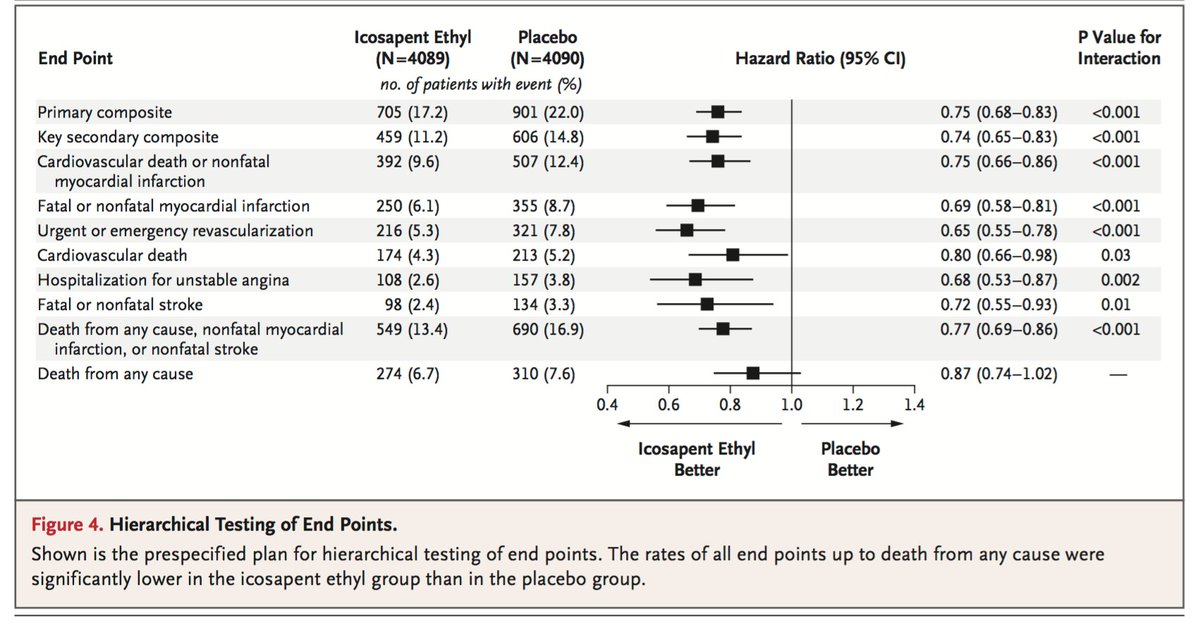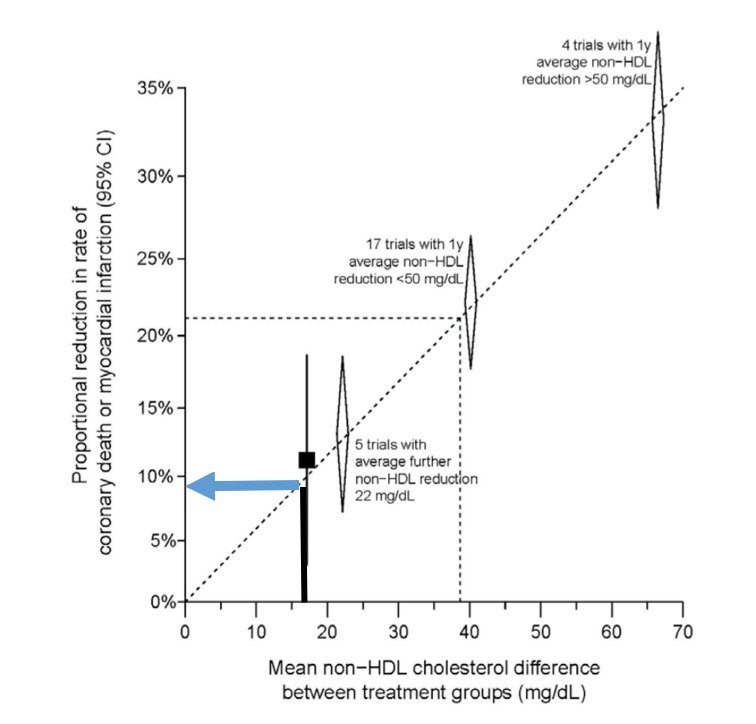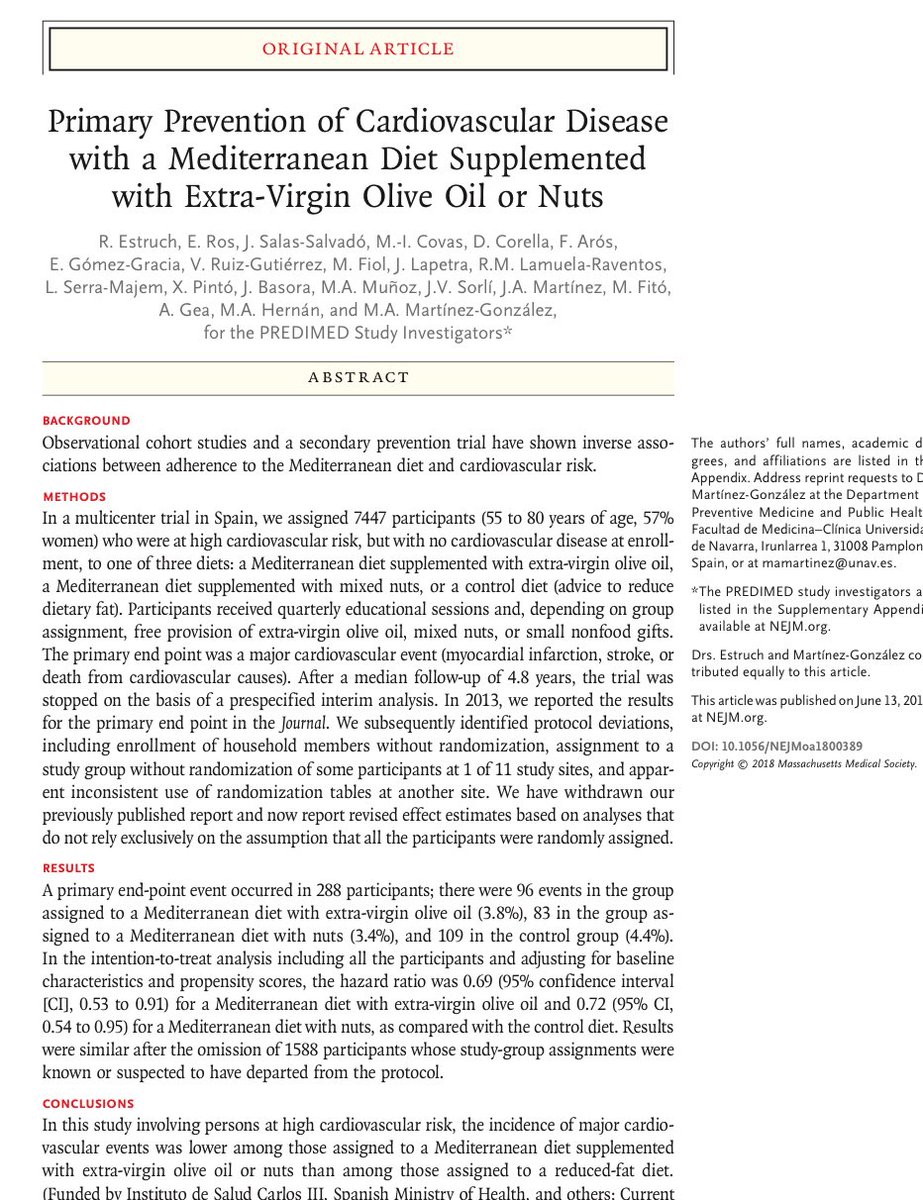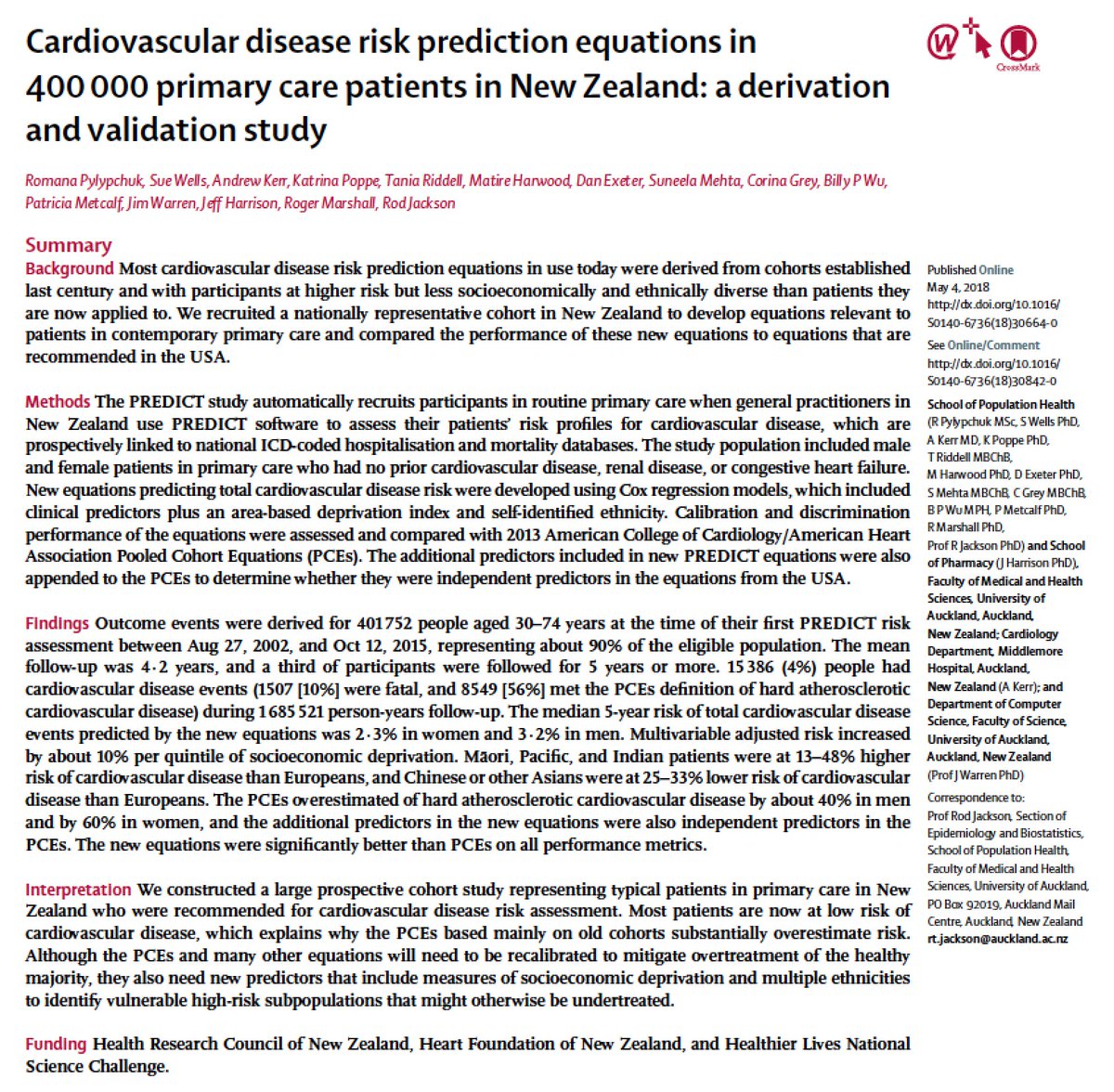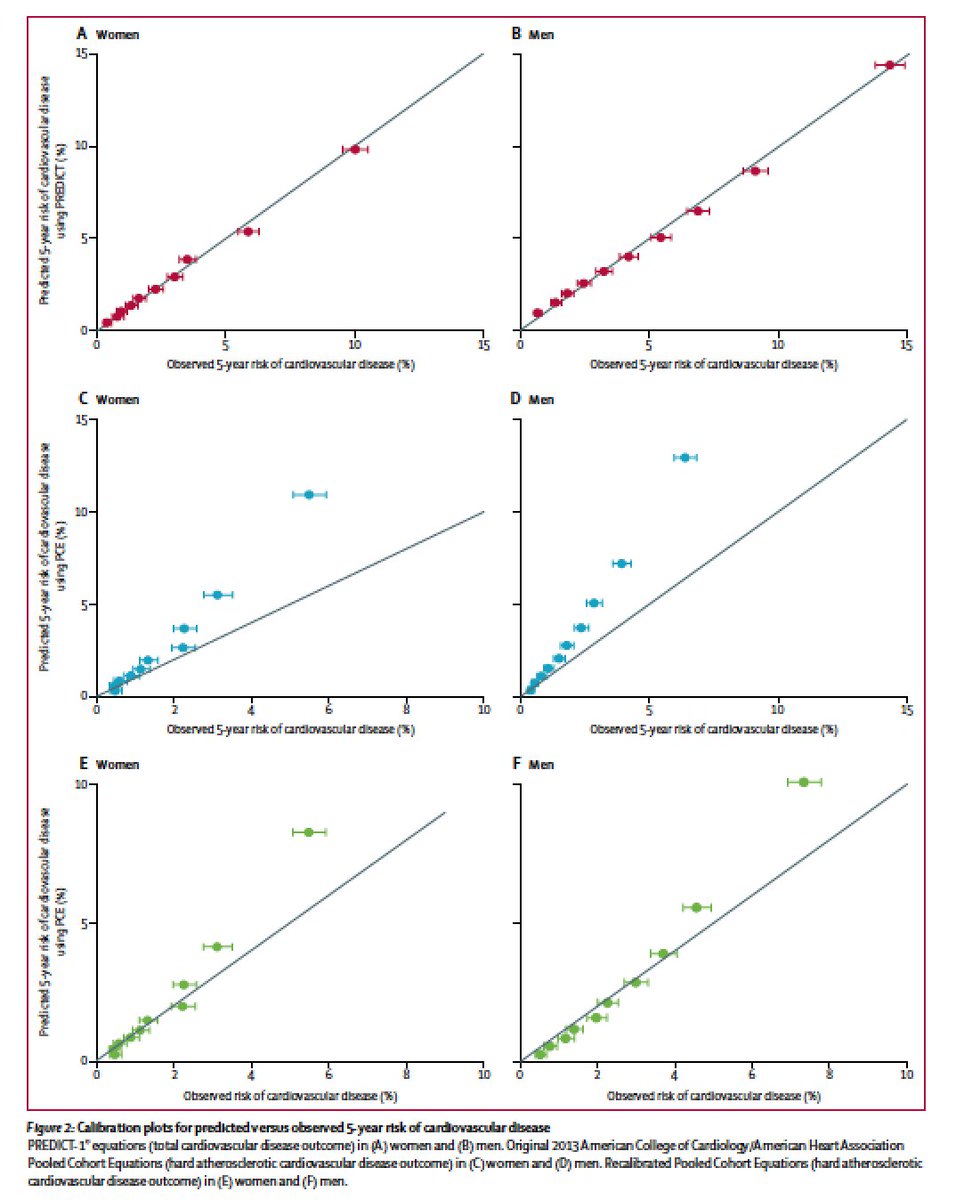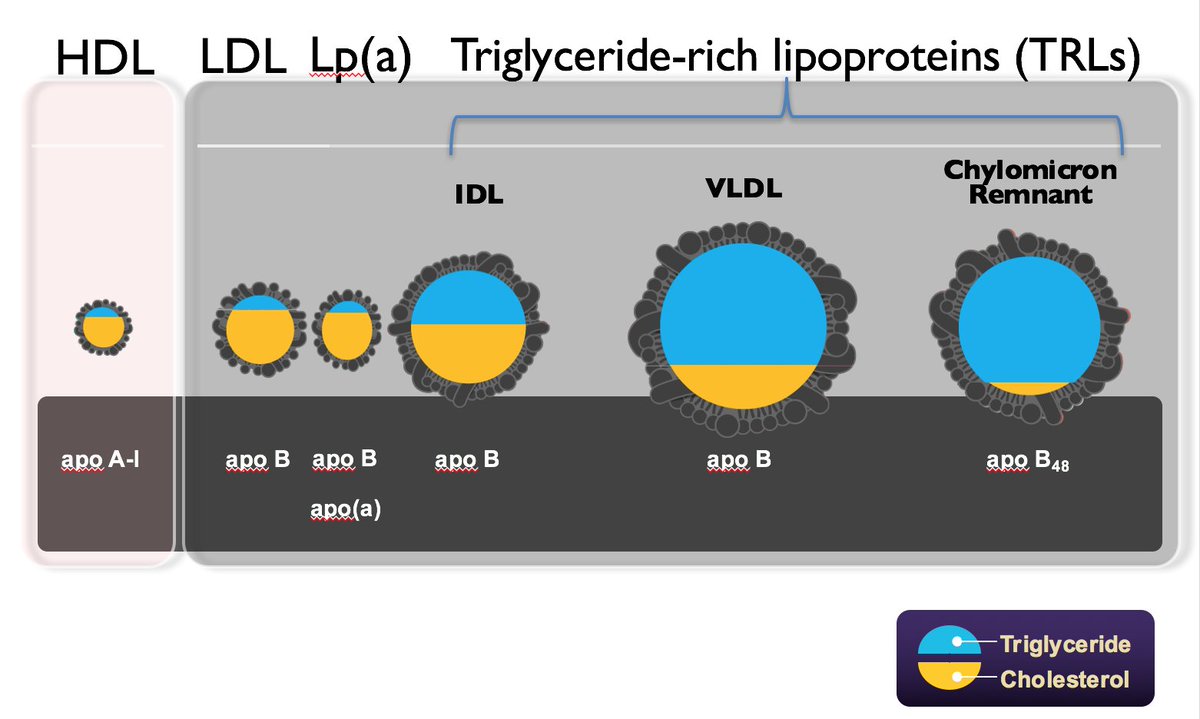
We approximate [lipoproteins] by measuring lipids they carry
TG levels approximate [TRLs] (a collection of several particles)
But, TRLs also carry cholesterol
For every 5 mg/dl triglycerides in TRL, ~1 mg/dl cholesterol
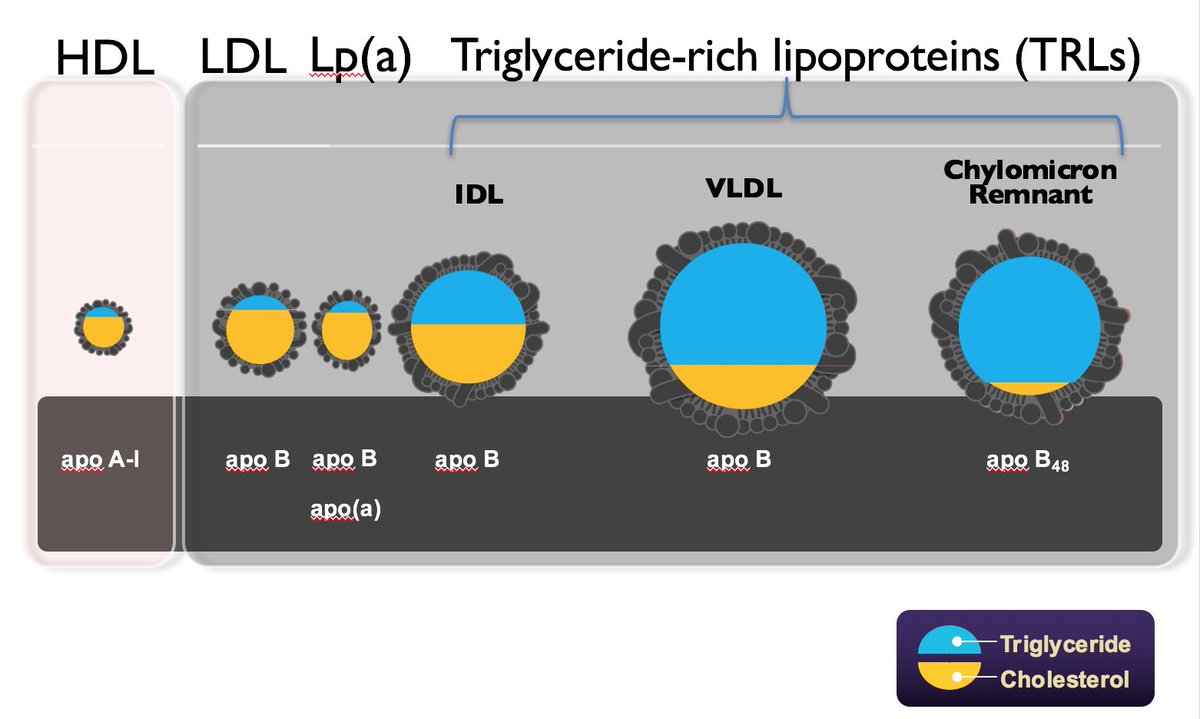
See here from 2013
kathiresanlab.org/our-publicatio…
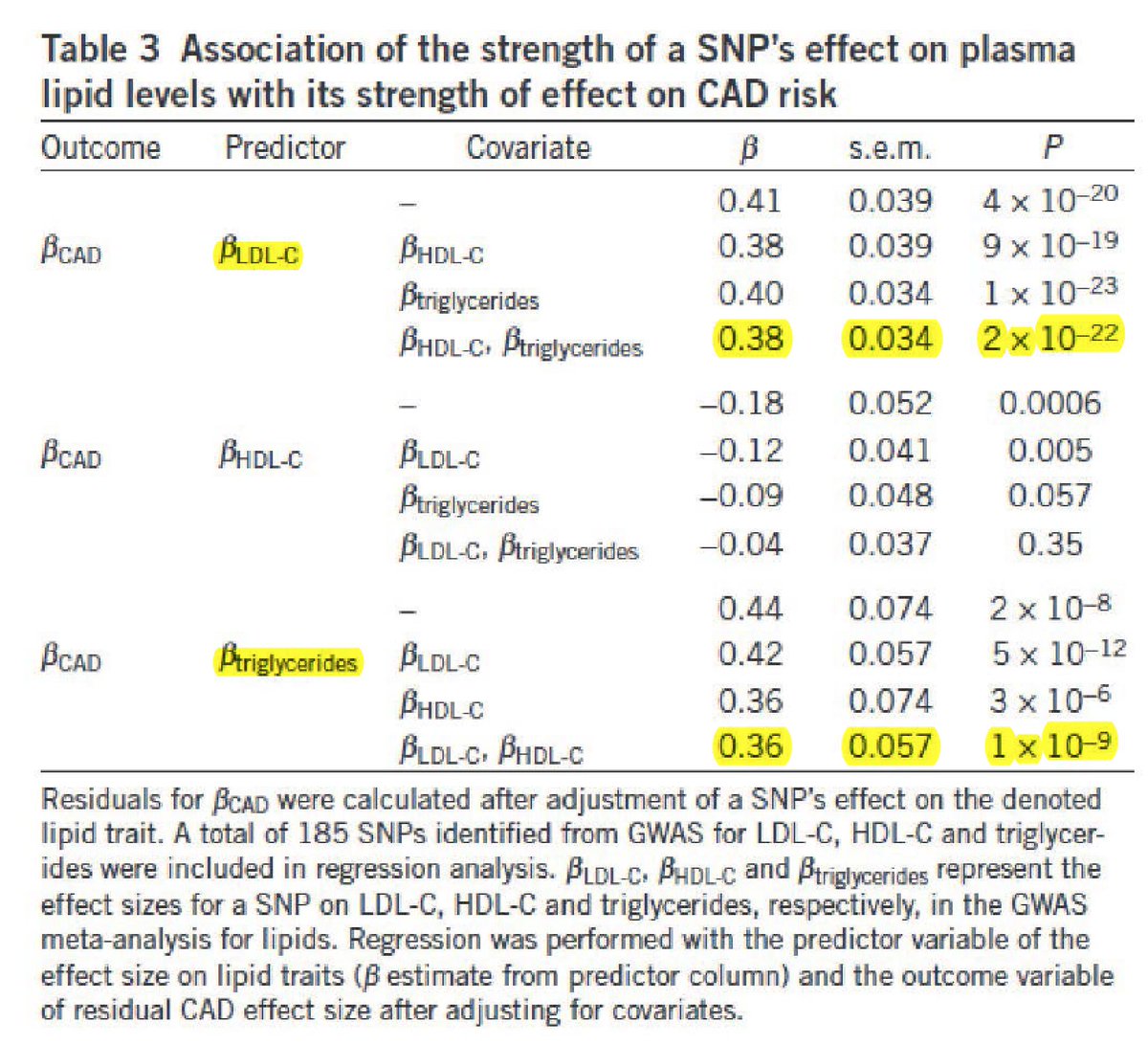
1. will every way of lowering plasma TRL reduce CAD risk?
Best genetic evidence is for one pathway (lipolysis by LPL)
5 genes:
lipoprotein lipase (LPL) and 4 endogenous regulators (ANGPTL3, ANGPTL4, APOC3, APOA5)
kathiresanlab.org/our-publicatio…
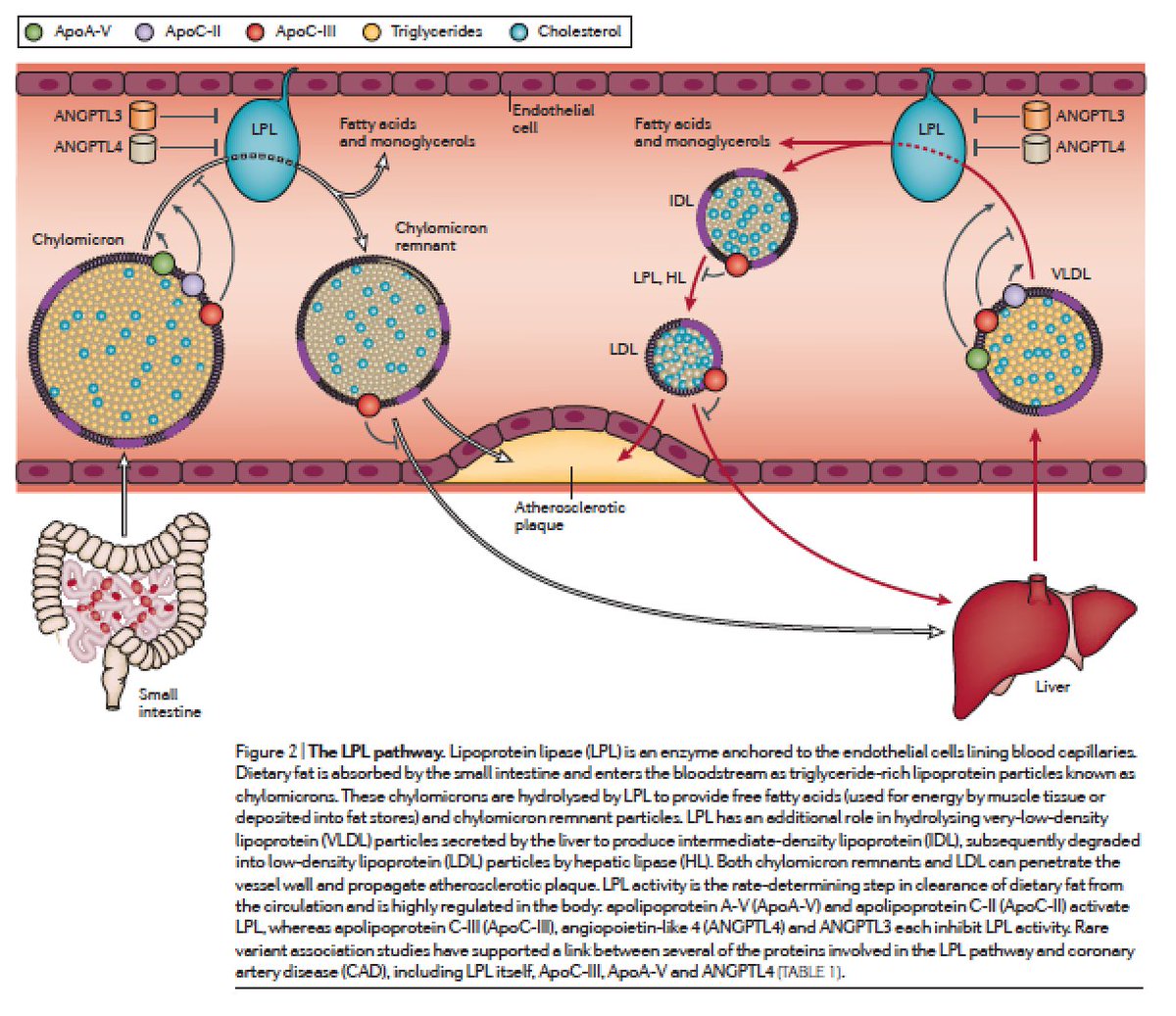
rare coding mutations in 5 LPL pathway genes affect CAD risk
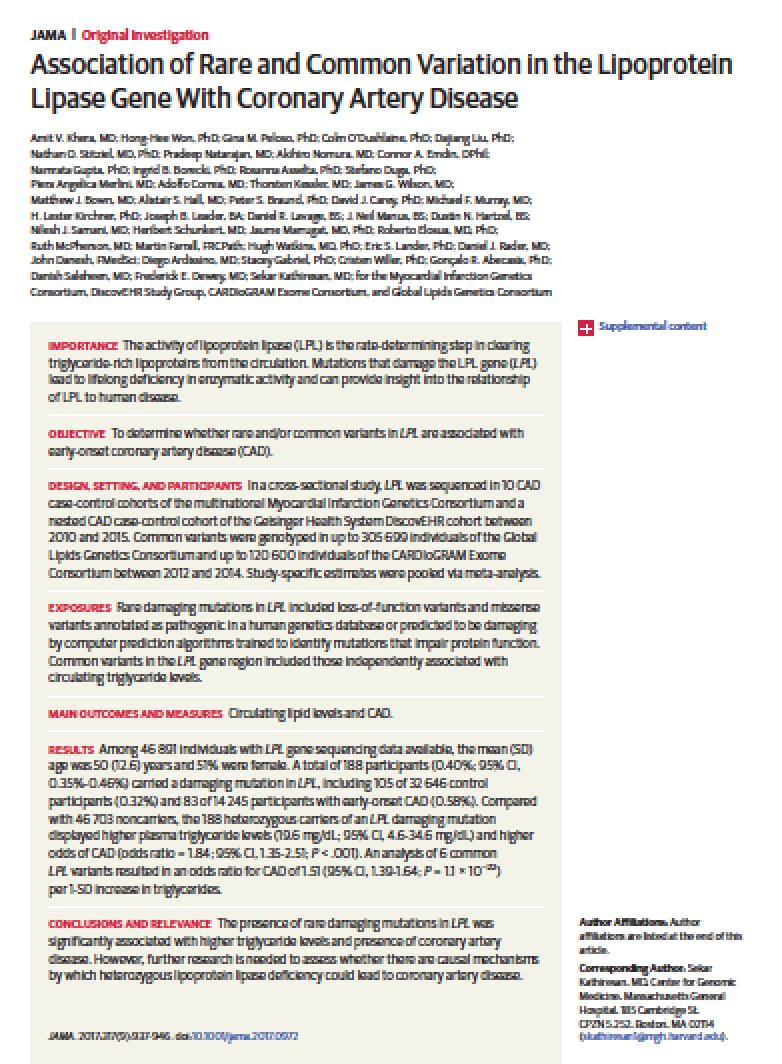
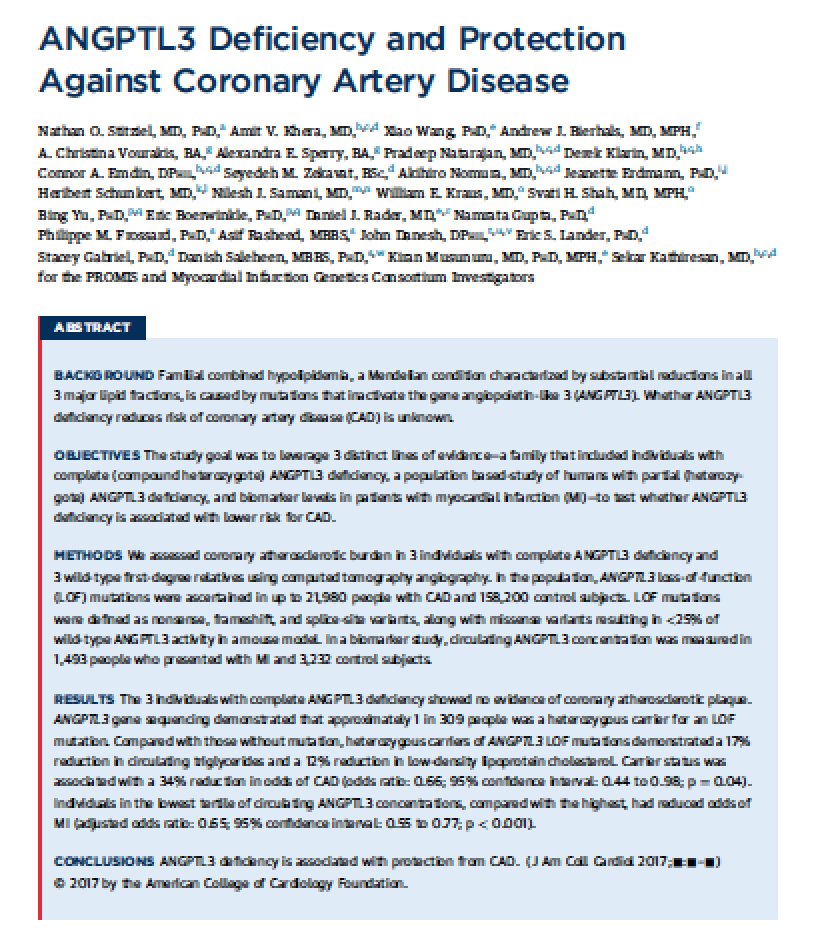

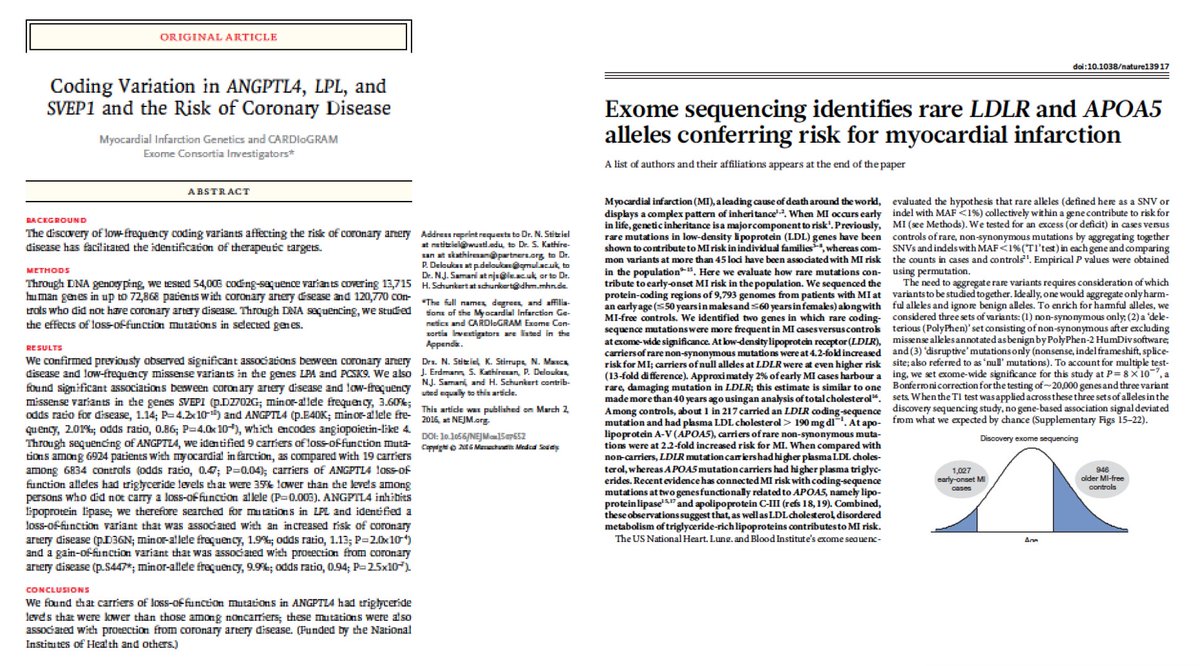
At least 3 options:
blood TG
blood apoB
blood non-HDL-C cholesterol (this is the cholesterol in the LDL and TRL particles)
Report today suggesting that apoB might be best
Our genetic data suggested that for a standard deviation increase in plasma TG (genetic, lifelong, SD ~90mg/dl), 50% higher CAD risk
Flipping for lowering,
90mg/dl lower TG = 33% lower CAD risk
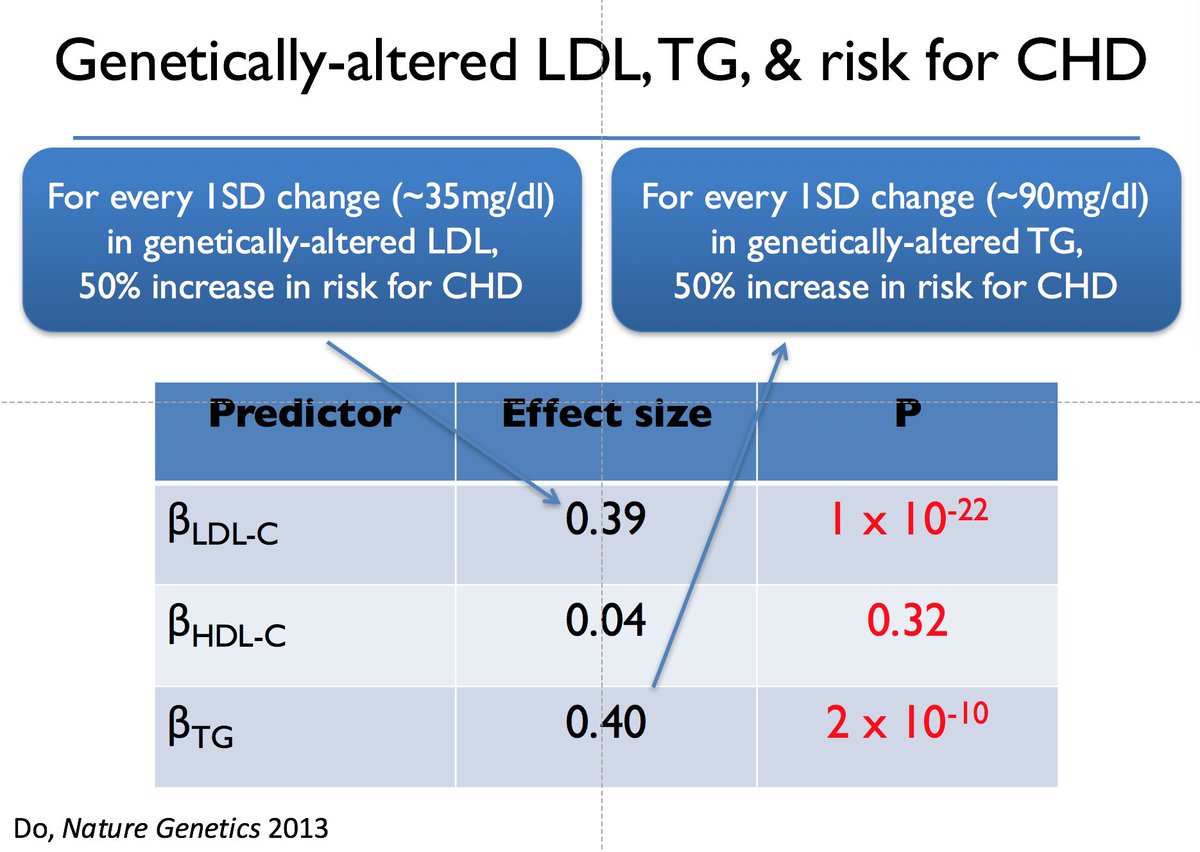
So, need to at-least halve estimate for Rx which is typically < 5y
Now, you get: for every 90mg/dl lower TG with Rx = ~15% lower CAD risk !!!
Are STRENGTH and REDUCE-IT powered for this dose-response?
Maybe but concerns:
a. don’t know exact target(s) fish oil
b. even if getting at lipolysis pathway, degree TRL lowering may not be enough (studies on margin of power)
Simple approach:
Take TG change & divide by 5 to get the cholesterol change.
Then, ask how much that degree of cholesterol would be expected to change CAD risk (based on CTT)
90 mg/dl TG lowering = 18 mg/dl cholesterol lowering
CTT: for every 39 mg/dl cholesterol lowering, about 22% reduction CAD
So, 18 mg/dl chol lowering = 10% reduction in CAD
So, if a fish oil lowers TG by 90 mg/dl, might only get 10% reduction CAD!

